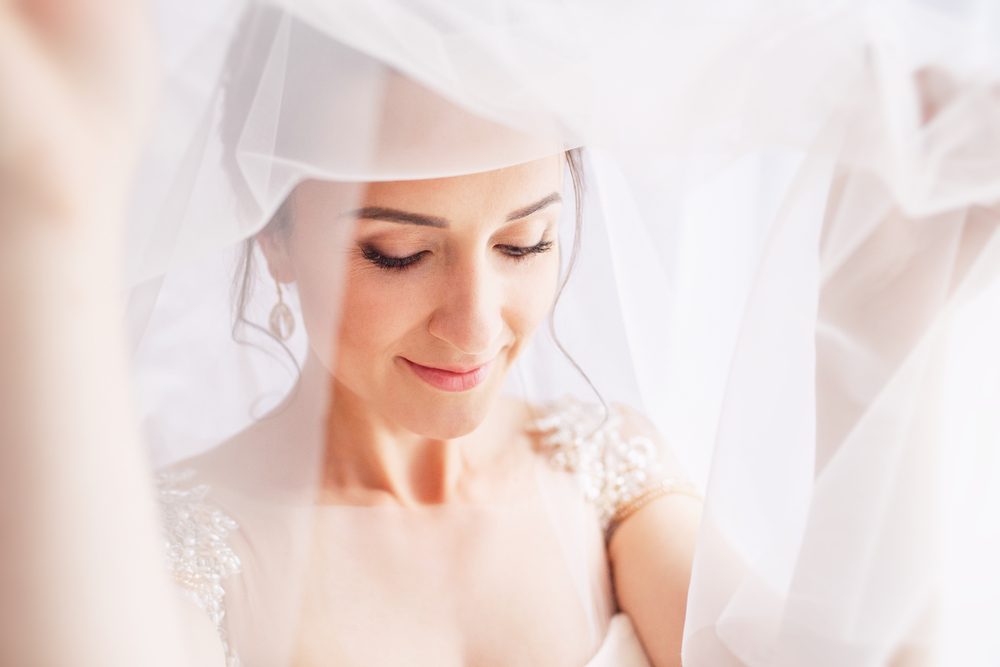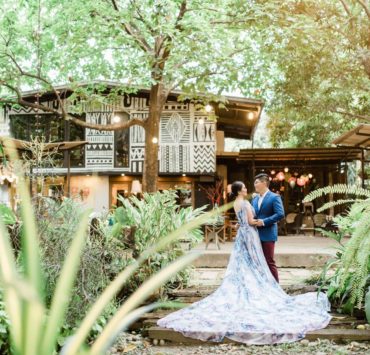When we think of a bride, we always picture her wearing a long, elegant white gown, with her veil cascading softly behind her. It’s romantic. Timeless. Maybe even a little mysterious. But have you ever wondered: why do brides wear veils in the first place?
Modern-day brides often wear veils as a fashion statement or choose to skip them altogether. This might depend on the bride’s personal preference, style, or religious beliefs. However, many brides still opt to wear a wedding veil due to its rich history and tradition.
If you’re trying to decide whether a veil is right for your big day—or you’re just curious about where this practice started—read on.
What is a Veil?
A wedding veil is a piece of sheer fabric—often made from tulle, lace, or chiffon—that’s worn over a bride’s head or face. It can be long or short, embellished or minimalist, and styled in numerous ways, depending on the look you’re going for.
However, more than just a fashion accessory, a veil is considered a traditional part of the bridal ensemble, alongside the white dress and the bouquet. Some brides choose a dramatic floor-length veil that trails behind them as they walk down the aisle, while others go for a simple birdcage style. Some might even forgo veils entirely.
No matter the form, the wedding veil remains one of the most iconic aspects of Filipino wedding tradition. But where did it originate?
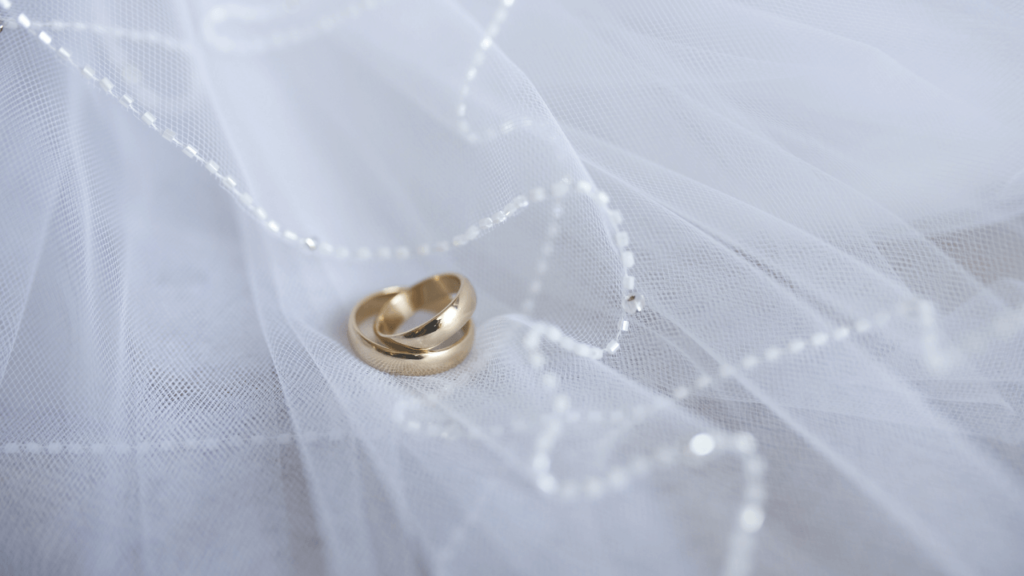
The History of Veils
Veils have a surprisingly rich and layered history. While many brides wear a veil to enhance their wedding day ensemble, the origins of the veil were less rooted in fashion and more in tradition.
Ancient Times
Brides in ancient Rome wore bright red or yellow veils called flammeum to ward off evil spirits. The veil covered the bride from head to toe, a symbol of both purity and protection. In many cultures, veiling the bride was also used to hide her face from the groom until after the vows, especially in arranged marriages.
Religious Significance
Veils also carry strong religious connotations. A wedding veil is derived from “mantilla” or chapel veil, which was commonplace in the Catholic Church for the first 2,000 years. Historically, Catholic women wore veils to symbolize the special bond between Christ and the Church. Think of it as a way to show their devotion and purity, a beautiful sign of their sanctity and submission.
Even now, you can still see women wearing chapel veils during Mass or when they enter holy places. For Catholic weddings, the bride’s veil isn’t just an accessory; it’s a significant part of her outfit, representing her spiritual purity and deep reverence for the sacrament of marriage.
From Obscurity to Elegance
Over time, the veil evolved from a religious or cultural requirement into a bridal tradition. Wearing a veil became a symbol of status in the Victorian era. Queen Victoria herself wore a veil during her wedding to Prince Albert in 1840. It sparked a major fashion trend that remains popular in weddings to this day.
Since then, what a veil represents has shifted. It’s less about modesty these days and more about tradition, looking beautiful, and showing off personal style. Of course, some brides still love the original meaning behind it, but for many others, it simply feels like the perfect finishing touch to their bridal look.
The Symbolism of Wedding Veils
So, what does it really mean to wear a veil at a wedding? The answer depends on who you ask—and what you want it to mean.
Purity and Modesty
Traditionally, veils have been seen as a sign of purity and virtue. Covering the bride’s face or head was a way of signifying innocence before entering a new chapter of life. In Christianity, it’s a nod to the sacredness of the ceremony and the spiritual bond being formed. Catholics practice veiling the altar, the chalice, and the tabernacle that houses the Body of Christ. We put veils on things that we consider sacred and worth protecting because it is holy.
The same meanings can be applied to brides. Veils have shifted from being a symbol of subservience to protecting something that is cherished, adored, and respected.
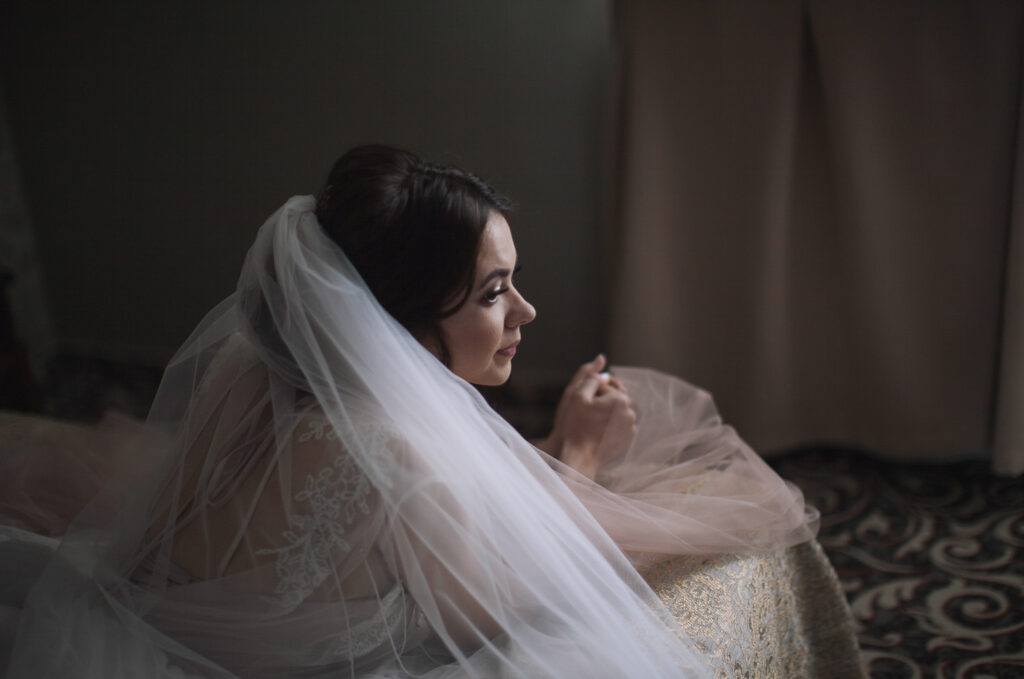
Transformation and Transition
A veil can also symbolize the shift from singlehood to married life. Lifting the veil—whether by the groom or by the bride herself—is a moment that marks a new beginning. It’s a beautiful metaphor for unveiling your new life together.
Mystery and Reveal
There’s just something incredibly cinematic about a wedding veil. That soft, dreamy blur it creates as the bride makes her entrance adds a beautiful layer of mystery. And when the veil is finally lifted? It’s more than just seeing her face; it’s a revelation of all the emotions, pure joy, and excited anticipation bubbling up in that moment.
Modern Meanings
Today, many brides wear veils not for symbolic reasons, but for aesthetic purposes. A veil can elevate your whole look, add drama to your walk down the aisle, and frame your face in photos. Some choose statement pieces with beading and lace, while others prefer clean, modern cuts for a minimalist vibe.
There’s also a growing group of brides who reject traditional meanings altogether, choosing veils simply because they feel beautiful in them.
Why Wedding Veils Are Still Important Today
Beyond the traditional or religious connotations of veils in weddings, there’s just something powerful and memorable about the moment a veil is lifted. It adds drama and depth to the ceremony in a quiet but emotional way.
A veil also instantly transforms your look from “pretty white dress” to “bride.” It enhances the moment you walk down the aisle, helping you feel that this day is truly one of a kind. That emotional shift matters, and for many brides, the veil is the thing that creates it.
More than anything, wearing a veil today is about what you want it to mean. The veil can be a deeply personal piece of your wedding day.
In short, a wedding veil remains essential not because of rules or expectations, but because it can make any bride feel beautiful and ethereal. That’s something no trend can replace!
Should You Wear a Wedding Veil?
Now that you understand the context behind the wedding veil tradition, you may be considering whether to continue honoring that practice.
Wearing a veil isn’t a must. Many brides choose not to wear one at all, and that’s okay. Here are a few things to think about:
1. Your Personal Beliefs
If your faith or family traditions value the symbolism of veils, it might feel meaningful to include one in your wedding. Not religious? Don’t feel obligated to wear a veil. It’s your day, your rules.
2. Your Wedding Theme and Location
Veils often work beautifully in traditional church ceremonies or formal venues. If you’re Catholic and planning to get married in a Catholic Church, a wedding veil is a staple. But if you’re getting married on a beach, in the forest, or having a civil ceremony, you might prefer something more low-maintenance, like a floral hairpiece or a minimalist cape.
3. Your Dress
Your veil should complement your dress, not overpower it. If your gown is super detailed, a simple veil might be the perfect match. But if your dress is more on the minimalist side, you can totally rock a statement veil that really stands out! If you’re feeling a bit lost on how to style it, don’t worry—your designer or stylist can help you figure out the best shape and length.
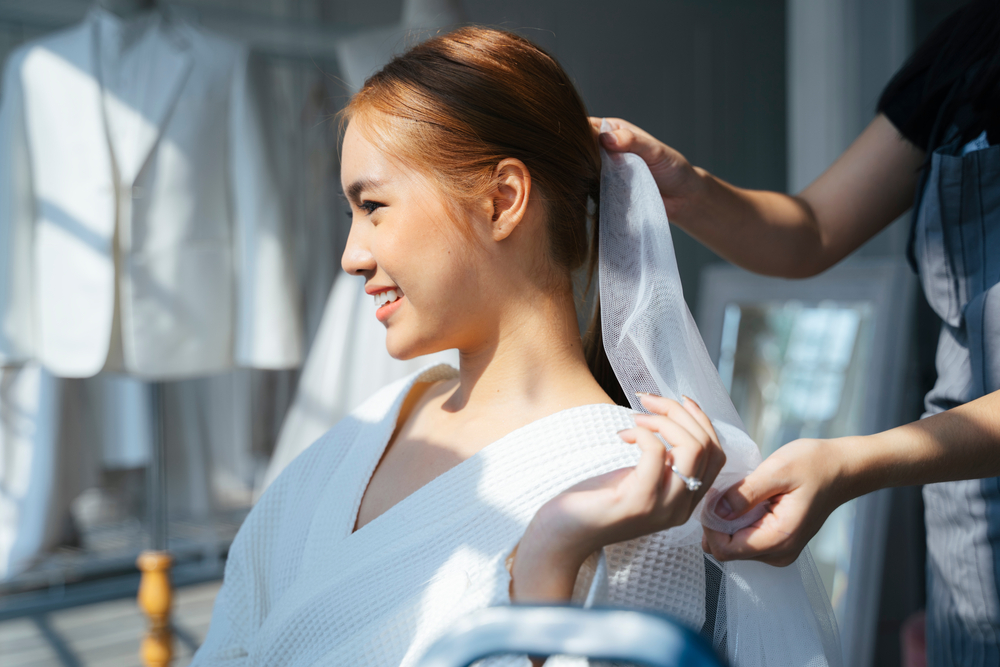
4. Your Personality
Wear what feels like you. If a veil makes you feel elegant and totally bridal, then absolutely go for it! But if it feels too traditional or just a bit fussy, there’s no rule saying you have to wear one. Many brides are opting for various options these days, such as fabulous headbands, fun and colorful veils, or even going without a headpiece at all.
So, why do brides wear veils? Whether it’s because of tradition, religious reasons, or purely an aesthetic choice, all are valid.
Own the Aisle, Your Way
At the end of the day, the veil is just one piece of your wedding look. What matters most is that you show up on your wedding day authentic, confident, and surrounded by loved ones who support your union. If you’re wearing a veil, it can mean whatever you wish, and you don’t have to subscribe to any beliefs that don’t reflect your own or don’t feel true to you.

